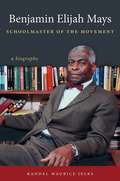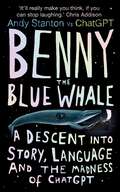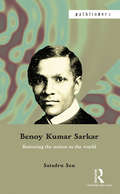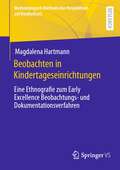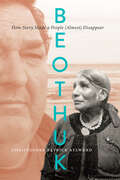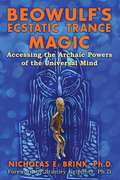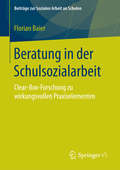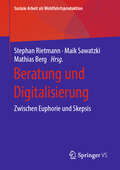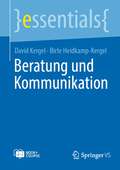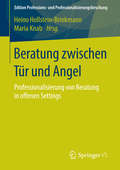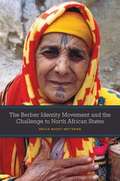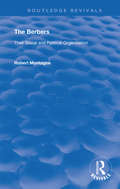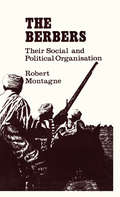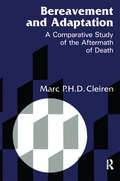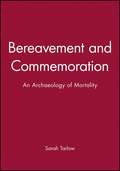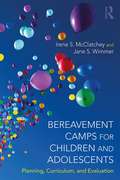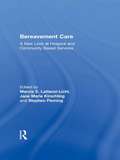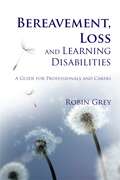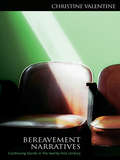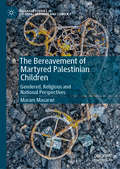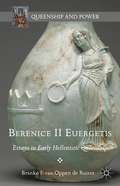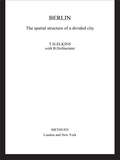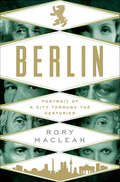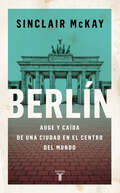- Table View
- List View
Benjamin Elijah Mays, Schoolmaster of the Movement
by Randal Maurice JelksIn this first full-length biography of Benjamin Mays (1894-1984), Randal Maurice Jelks chronicles the life of the man Martin Luther King Jr. called his "spiritual and intellectual father." Dean of the Howard University School of Religion, president of Morehouse College, and mentor to influential black leaders, Mays had a profound impact on the education of the leadership of the black church and of a generation of activists, policymakers, and educators. Jelks argues that Mays's ability to connect the message of Christianity with the responsibility to challenge injustice prepared the black church for its pivotal role in the civil rights movement. From Mays's humble origins in Epworth, South Carolina, through his doctoral education, his work with institutions such as the National Urban League, the NAACP, and the national YMCA movement, and his significant career in academia, Jelks creates a rich portrait of the man, the teacher, and the scholar. Benjamin Elijah Mays, Schoolmaster of the Movement is a powerful portrayal of one man's faith, thought, and mentorship in bringing American apartheid to an end.
Benny the Blue Whale: One Author's Descent into the Madness of AI
by Andy StantonAI is changing the world at frightening speed. A bestselling author decides to find out more… &‘Something profound and utterly brilliant is going on… hilarious.&’ THE TIMES Is ChatGPT the end of creative industries as we know them? An ethical quagmire from which there is no return? A threat to all our jobs, as we keep hearing on the news? Bestselling children&’s author Andy Stanton has made a career out of writing differently – from the unconventional &‘hero&’ of his bestselling Mr Gum series to his penchant for absurdist plots, his children&’s books are anything but formulaic. When a friend introduces him to ChatGPT, the new large language chatbot, Andy is as sceptical as he is curious. Can this jumble of algorithms really mimic the spontaneity of human thought? Could it one day replace human authors like him for good? And are we soon to be ruled over by despotic robot overlords? He decides there&’s only one thing for it – he must test this bot&’s capabilities. Eventually, he settles on a prompt that will push the algorithm to its creative limits: &‘tell me a story about a blue whale with a tiny penis.&’ Chaos ensues. What follows is a surprising and illuminating battle between Andy and ChatGPT that maybe, just maybe, might help us all understand AI a little bit better. Join Andy and his beleaguered AI lackey on a rollicking metafictional journey through the art of storytelling. Presenting his prompts and the AI-generated narrative alongside extensive commentary, Stanton provides a startling paean to the art of a good story and boundless human creativity. Hopeful and hilarious, Benny the Blue Whale provides a joyfully anarchic meditation on AI, literature and why we write. *** A WATERSTONES AND NEW SCIENTIST BEST BOOK OF 2023 &‘There&’s no book like it. Scholarly, childish, fascinating and hilarious – one of our funniest writers dissects what it takes to build a story and what that tells us about being human. It&’ll really make you think, if you can stop laughing.&’ Chris Addison, co-creator of BREEDERS &‘Entertaining and alarmingly relevant, provocative and philosophically satisfying, it&’s ultimately a profoundly human text.&’ OBSERVER &‘A magnificent experiment by a perfect fool – deep and shallow and stupid and clever – the perfect use of AI (Andy Intelligence).&’ Robin Ince, author of THE IMPORTANCE OF BEING INTERESTED &‘Benny the Blue Whale is many things. It&’s a fascinating discourse on the nature of language and storytelling. It&’s a philosophical treatise on the possibilities of artificial intelligence. It&’s a receptacle for obscenely hilarious jokes... A brilliant and beautiful cyborg: part human brain, part computational muscle. It&’s a post-post-modern work of genius.&’ Anthony McGowan, Carnegie Medal-winning author of LARK
Benoy Kumar Sarkar: Restoring the nation to the world (Pathfinders)
by Satadru SenThis book explores the life and times of the pioneering Indian sociologist Benoy Kumar Sarkar. It locates him simultaneously in the intellectual history of India and the political history of the world in the twentieth century. It focuses on the development and implications of Sarkar’s thinking on race, gender, governance and nationhood in a changing context. A penetrating portrait of Sarkar and his age, this book will be of great interest to scholars and researchers of modern Indian history, sociology, and politics.
Beobachten in Kindertageseinrichtungen: Eine Ethnografie zum Early Excellence Beobachtungs- und Dokumentationsverfahren (Methodologisch-Methodische Perspektiven auf Kindheit(en))
by Magdalena HartmannIn dieser Studie werden die sozialen Praktiken im Beobachtungs- und Dokumentationsverfahren des Early Excellence-Ansatzes erforscht. Dabei werden im Rahmen einer (ko-)konstruktivistisch-postmodern ausgerichtete Ethnographie sowohl Beobachtungs- und Dokumentationspraktiken der pädagogischen Fachkräfte als auch der forschenden Person untersucht. Bezugnehmend auf praxistheoretische und beobachtungstheoretische Perspektiven wird die Komplexität der Organisation des Beobachtungs- und Dokumentationsverfahrens in der Praxis von Kindertageseinrichtungen herausgearbeitet und nachgezeichnet, wie die soziale Position in der Beobachtung relational zwischen programmatischen und pädagogischen Anforderungen hergestellt wird.
Beothuk: How Story Made a People (Almost) Disappear
by Christopher Patrick AylwardThe well-known story of the Beothuk is that they were an isolated people who, through conflict with Newfoundland settlers and Mi’kmaq, were made extinct in 1829. Narratives about the disappearance of the Beothuk and the reasons for their supposed extinction soon became entrenched in historical accounts and the popular imagination.Beothuk explores how the history of a people has been misrepresented by the stories of outsiders writing to serve their own interests – from Viking sagas to the accounts of European explorers to the work of early twentieth-century anthropologists. Drawing on narrative theory and the philosophy of history, Christopher Aylward lays bare the limitations of the accepted Beothuk story, which perpetuated but could never prove the notion of Beothuk extinction. Only with the integration of Indigenous perspectives, beginning in the 1920s, was this accepted story seriously questioned. With the accumulation of new sources and methods – archaeological evidence, previously unexplored British and French accounts, Mi’kmaq oral history, and the testimonies of Labrador Innu and Beothuk descendants – a new historical reality has emerged.Rigorous and compelling, Beothuk demonstrates the enduring power of stories to shape our understanding of the past and the impossibility of writing Indigenous history without Indigenous storytellers.
Beowulf's Ecstatic Trance Magic: Accessing the Archaic Powers of the Universal Mind
by Nicholas E. Brink Stanley KrippnerUse ecstatic trance to journey to the time of Beowulf and learn first hand the ancient magic of the early Nordic people • Reveals a hidden side to the epic of Beowulf through the perspective of Queen Wealhtheow • Shows how Grendel respected and would not harm Queen Wealhtheow because she practiced the ancient magic of the Mother Goddess Freyja • Explains how the magic practices of Queen Wealhtheow provide a blueprint for our emergence from the warlike nature of the past millennia into a time of peace and compassion for our Great Mother Earth Using the altered state of ecstatic trance to access the memories of the Universal Mind, Nicholas Brink takes us back to ancient Scandinavia, to the time of the epic of Beowulf, the oldest piece of literature written in the English language. Sharing his ecstatic trance techniques along the way, his journey allows us to re-experience the life and shamanic practices of Queen Wealhtheow, the wife of King Hrothgar, the king rescued by Beowulf from the torment of the monster Grendel. Revealing a hidden side to the epic of Beowulf, Brink details how Grendel respected and would not harm Queen Wealhtheow and her teacher Vanadisdottir, a priestess of the goddess Freyja, for they practiced the ancient magic of the earlier hunter-gatherer era when the Great Mother Earth was worshipped. In the time of the queen the peaceful and compassionate traditions of this era were becoming forgotten, succumbing to settlements, kingdoms, and territorial disputes. We gain first-person experience of Wealhtheow and Vanadisdottir’s veneration of the Great Mother and the ancient magic of the early Nordic people as practiced by the seiðr workers, seers, and spirit travelers, the shamans of the time. These practices include divination through the goddess Freyr, contacting Bear spirits, and spirit journeying to various realms. As we experience our own time of transition and turmoil much like that of Beowulf’s time, Nicholas Brink reveals how the original magic of our ancestors, as practiced by Queen Wealhtheow, provides a blueprint for our emergence from the warlike nature of the past into a time of peace and compassion for our Great Mother Earth.
Beratung in der Schulsozialarbeit: Clear-Box-Forschung zu wirkungsvollen Praxiselementen (Beiträge zur Sozialen Arbeit an Schulen #6)
by Florian BaierIn diesem Buch wird ein vom Schweizerischen Nationalfonds (SNF) gefördertes Forschungsprojekt vorgestellt, in dem der Frage nachgegangen wurde, wie in Schulsozialarbeit und Jugendarbeit Wirkungen und Nutzen erzeugt werden. Das Projekt wurde als Clear-Box-Forschung konzipiert und in einer Kleinstadt in der Schweiz durchgeführt. Es wurden verschiedene qualitative und quantitative Methoden eingesetzt (Videographie, Interviews, Beobachtungen, standardisierte Befragungen). Die Ergebnisse des Projekts liefern Impulse auf drei Ebenen: erstens leisten sie einen Beitrag zur weiteren Professionalisierung der beiden Handlungsfelder, zweitens tragen die theoretischen Generalisierungen zu einem vertieften Verständnis von Schulsozialarbeit und Jugendarbeit bei und drittens werden forschungsmethodologische und erkenntnistheoretische Herausforderungen der Kombination verschiedener Erhebungsmethoden aufgezeigt.
Beratung und Digitalisierung: Zwischen Euphorie und Skepsis (Soziale Arbeit als Wohlfahrtsproduktion #15)
by Stephan Rietmann Maik Sawatzki Mathias BergDigitalisierung ist mit tiefgehenden Änderungen sozialer, psychologischer und kultureller Gewohnheiten verbunden. Dies betrifft beispielsweise die Art, wie soziale Beziehungen gestaltet werden oder wie wir als Person über uns selbst denken, wenn ein Algorithmus mehr Kenntnis von uns hat, als wir selbst. Dieser explorative Sammelband enthält fachwissenschaftliche und praxisorientierte Beiträge, die Chancen und Risiken von Digitalisierung interdisziplinär beleuchten und der Leserschaft wertvolle Impulse zur Reflektion für die eigene Beratungspraxis bieten.
Beratung und Kommunikation (essentials)
by David Kergel Birte Heidkamp-KergelDer vorliegende Band liefert eine kurze und praxisorientierte Einführung in Beratungs- und Kommunikationsstrategien. Dabei stehen lösungsorientierte Formen der Kommunikation sowie praxisorientierten Übungen im Fokus der Darstellung. So werden v.a. Strategien vermittelt, die ressourcenorientiert die Potenziale und Stärken der Gesprächspartner*innen adressieren. Neben Kommunikationsmodellen zur Konfliktlösung werden daher Beratungsansätze und Fragestrategien praxisorientiert dargestellt, durch die Stärken identifiziert, Ressourcen aktiviert und Wachstumspotenziale freigelegt werden können.Den kostenlosen Zugang zum Online-Kurs finden Sie direkt im Buch.
Beratung zwischen Tür und Angel: Professionalisierung von Beratung in offenen Settings (Edition Professions- und Professionalisierungsforschung #5)
by Heino Hollstein-Brinkmann Maria KnabIn psychosozialen Feldern findet Beratung häufig in sogenannten offenen oder uneindeutigen Settings und in Übergangssituationen statt, oder anders formuliert: zwischen Tür und Angel. In vielen Bereichen der Sozialen Arbeit ist dies eine alltägliche Form der Interaktion, insbesondere dort, wo die Gestaltung alltagsnaher Kontexte eine Rolle spielt, beispielsweise im betreuten Wohnen, in der Familienhilfe oder in Tagesgruppen. Die Beiträge des vorliegenden Bandes untersuchen die Potenziale dieser speziellen Form von Beratung und thematisieren Reflexionsbedarfe von Ratsuchenden und BeraterInnen mit dem Ziel, ein spezifisches Beratungssetting der Sozialen Arbeit fachlich zu profilieren.
The Berber Identity Movement and the Challenge to North African States
by Bruce Maddy-WeitzmanLike many indigenous groups that have endured centuries of subordination, the Berber/Amazigh peoples of North Africa are demanding linguistic and cultural recognition and the redressing of injustices. Indeed, the movement seeks nothing less than a refashioning of the identity of North African states, a rewriting of their history, and a fundamental change in the basis of collective life. In so doing, it poses a challenge to the existing political and sociocultural orders in Morocco and Algeria, while serving as an important counterpoint to the oppositionist Islamist current. This is the first book-length study to analyze the rise of the modern ethnocultural Berber/Amazigh movement in North Africa and the Berber diaspora. Bruce Maddy-Weitzman begins by tracing North African history from the perspective of its indigenous Berber inhabitants and their interactions with more powerful societies, from Hellenic and Roman times, through a millennium of Islam, to the era of Western colonialism. He then concentrates on the marginalization and eventual reemergence of the Berber question in independent Algeria and Morocco, against a background of the growing crisis of regime legitimacy in each country. His investigation illuminates many issues, including the fashioning of official national narratives and policies aimed at subordinating Berbers in an Arab nationalist and Islamic-centered universe; the emergence of a counter-movement promoting an expansive Berber “imagining” that emphasizes the rights of minority groups and indigenous peoples; and the international aspects of modern Berberism.
The Berbers: Their Social and Political Organisation (Routledge Revivals)
by Robert MontagneOriginally published in 1931 and re-editioned in 1973, this book presents Robert Montagues findings about the Berber world, providing a major contribution to the understanding of Islam and of Africa. Students of pre-industrial civilisations and of tribal societies alike, as well as anyone concerned with the Middle East or Africa, will welcome this text.
The Berbers: Their Social and Political Organisation (Routledge Revivals Ser.)
by Robert MontagneFrance entered the North African world in 1830. Its overt political role there ended in 1962. The interpenetration of cultures and languages which resulted from the colonial conquest has not ended yet. No doubt a time will come when an intellectual balance sheet of this epoch comes to be drawn up. When this is done, Robert Montagne’s name will head the list of those Frenchmen who have made a study of Berber society. The brilliance of his ideas, the thoroughness and perceptiveness of his documentation, the range of his historical and comparative vision, and (a trait not always found in scholarly writing on North Africa) the simplicity and vigour of his style, all help to make plain that we have here a social thinker and observer of the very first rank, and one who deserves to be far better known outside the French-speaking world than he is at present.
Bereavement and Adaptation: A Comparative Study of the Aftermath of Death (Series in Death, Dying, and Bereavement)
by Marc CleirenThis book offers a critical review of the main psychological theories on adaptation after loss followed by an overview of the results of the empirical research on bereavement. It also reflects on the results of the Leiden Bereavement Study, which compares the consequences of death.
Bereavement and Commemoration: An Archaeology of Mortality
by Sarah TarlowThis book provides an historical archaeology of death, burial and bereavement from the Reformation to the present.
Bereavement Camps for Children and Adolescents: Planning, Curriculum, and Evaluation
by Irene Searles McClatchey Jane S. WimmerBereavement Camps for Children and Adolescents is the first book to describe in detail how to create bereavement camps for children and adolescents. It is a comprehensive how-to guide, offering practical advice on planning, curriculum building, and evaluation. Readers will find a step-by-step plan for building a non-profit organization, including board development and fundraising, such as grant writing, soliciting businesses, and holding special events, as well as valuable information on nonprofit management and volunteer recruitment. The appendices include a variety of sample forms, letters, and more.
Bereavement Care: A New Look at Hospice and Community Based Services
by Jane Marie Kirschling Marcia E Lattanzi Stephen FlemingHere is a comprehensive, interdisciplinary look at current bereavement care practices and key concerns of care providers. Covering a broad spectrum of topics, interests, and perspectives from divergent disciplines and clinical experiences, the contributing authors explore theories and constructs that can clarify and be useful in the provision of bereavement services.Bereavement Care: A New Look at Hospice and Community Based Services addresses important issues related to the delivery of bereavement care and services. Chapters focusing on clinical concerns examine ways to distinguish grief from depression and the use of Jung’s theory to expand an understanding of the grief process. Others explore options for community-based group interventions and the role of the volunteer in the provision of hospice bereavement services. Chapters with a research focus highlight effective assessment tools, the applicability of Bugen’s model, and the practice and problems involved in hospice bereavement services.This rich and compassionate volume will be helpful to mental health professionals, social workers, chaplains, nursing personnel, and volunteers who work with or provide services to bereaved persons and families.
Bereavement, Loss and Learning Disabilities
by Robin GreyLosing a loved one and coping with the subsequent adjustments that follow are a difficult fact of life, but people with learning disabilities face specific difficulties in processing and managing these changes. Adopting an integrative approach, this book acknowledges the importance of helping relationships in supporting this vulnerable group through periods of loss and bereavement. The author explains how to engage the person with a learning disability in talking therapy by creating an open dialogue. Common signs of stress, factors to consider in assessing risk and advice on how best to approach difficult subjects are presented. The role of supervision in counselling and issues surrounding terminal illness are also discussed, and practical solutions offered. Professionals working in the field of learning disabilities, such as counsellors, therapists, carers and health and social care students will find this informed guide beneficial in communicating and supporting people with learning disabilities.
Bereavement Narratives: Continuing bonds in the twenty-first century
by Christine ValentineBereavement is often treated as a psychological condition of the individual with both healthy and pathological forms. However, this empirically-grounded study argues that this is not always the best or only way to help the bereaved. In a radical departure, it emphasises normality and social and cultural diversity in grieving. Exploring the significance of the dying person’s final moments for those who are left behind, this book sheds new light on the variety of ways in which bereaved people maintain their relationship with dead loved ones and how the dead retain a significant social presence in the lives of the living. It draws practical conclusions for professionals in relation to the complex and social nature of grief and the value placed on the right to grieve in one’s own way – supporting and encouraging the bereaved person to articulate their own experience and find their own methods of coping. Based on new empirical research, Bereavement Narratives is an innovative and invaluable read for all students and researchers of death, dying and bereavement.
The Bereavement of Martyred Palestinian Children: Gendered, Religious and National Perspectives (Palgrave Studies in Cultural Heritage and Conflict)
by Maram MasarwiThis book examines the phenomenon of individual and collective bereavement in Palestinian society. It seeks to explore the boundaries of the discourse of bereavement and commemoration in that society through the interactive relations between religion, nationality and gender, and the ways these influence the shaping of the mourning process for Palestinian parents who have lost their children in the second (al-Aqsa) Intifada. Over the course of the book’s five chapters, Maram Masarwi scrutinizes how these components have shaped the differences in behavior between bereaved fathers and bereaved mothers: what characterizes these differences, how they are expressed, and how they have managed to shape the characteristics of the experience of Palestinian bereavement.
Bereft: A Sister's Story
by Jane BernsteinAuthor Jane Bernstein was a senior in high school when her older sister Laura was murdered on the campus of Arizona State University. From the moment they heard the shattering news, Jane's parents handled their grief through stoic silence. Crying and mourning were forbidden; the past was the past, and it was essential to move on. More than 20 years later Jane Bernstein found herself compelled to revisit her sister's death, to learn what she could about the murder and the man convicted of the crime. In the process she found herself examining her own life and confronting the problems in her marriage.
Berenice II Euergetis
by Branko F. van Oppen de RuiterBerenice II Euergetis (ca. 267-6-221 BCE), one of the better known Ptolemaic queens, remains fairly unknown outside specialist circles. Berenice was queen at an important juncture in Hellenistic history. She was both the daughter of King Magas of Cyrene (modern day Libya) and wife to King Ptolemy III of Egypt. This collection of essays focuses on aspects of chronology, genealogy, and marital practices, as well as issues of royal ideology. The essays rely especially on literary evidence andart works in order to illuminate Berenice's status and position at the courts of Cyrene and Egypt. It offers new interpretations of the few known events of Berenice's life until the early reign of Ptolemy III, as well her influence and authority in Cyrene and Egypt.
Berlin: The Spatial Structure of a Divided City
by Dorothy Elkins T. H. Elkins B. HofmeisterThis anniversary study presents a readable, informative account of the development and current structure of Berlin.
Berlin: Portrait of a City Through the Centuries
by Rory MacLeanWhy are we drawn to certain cities? Perhaps because of a story read in childhood. Or a chance teenage meeting. Or maybe simply because the place touches us, embodying in its tribes, towers and history an aspect of our understanding of what it means to be human. Paris is about romantic love. Lourdes equates with devotion. New York means energy. London is forever trendy.Berlin is all about volatility.Berlin is a city of fragments and ghosts, a laboratory of ideas, the fount of both the brightest and darkest designs of history's most bloody century. The once arrogant capital of Europe was devastated by Allied bombs, divided by the Wall, then reunited and reborn as one of the creative centers of the world. Today it resonates with the echo of lives lived, dreams realized, and evils executed with shocking intensity. No other city has repeatedly been so powerful and fallen so low; few other cities have been so shaped and defined by individual imaginations.Berlin tells the volatile history of Europe's capital over five centuries through a series of intimate portraits of two dozen key residents: the medieval balladeer whose suffering explains the Nazis' rise to power; the demonic and charismatic dictators who schemed to dominate Europe; the genius Jewish chemist who invented poison gas for First World War battlefields and then the death camps; the iconic mythmakers like Christopher Isherwood, Leni Riefenstahl, and David Bowie, whose heated visions are now as real as the city's bricks and mortar. Alongside them are portrayed some of the countless ordinary Berliners who one has never heard of, whose lives can only be imagined: the Scottish mercenary who fought in the Thirty Years' War, the ambitious prostitute who refashioned herself as a baroness, the fearful Communist Party functionary who helped to build the Wall, and the American spy from the Midwest whose patriotism may have turned the course of the Cold War.Berlin is a history book like no other, with an originality that reflects the nature of the city itself. In its architecture, through its literature, in its movies and songs, Berliners have conjured their hard capital into a place of fantastic human fantasy. No other city has so often surrendered itself to its own seductive myths. No other city has been so shaped and defined by individual imaginations. Berlin captures, portrays, and propagates the remarkable story of those myths and their makers..
Berlín: Auge y caída de una ciudad en el centro del mundo
by Sinclair McKayNo se puede entender el siglo XX sin conocer la historia de Berlín. Una biografía magistral de la ciudad y sus habitantes. A lo largo del siglo XX, Berlín estuvo en el centro del mundo. Su historia suele abordarse de manera fragmentaria, pero este libro borra las líneas entre generaciones de berlineses para ofrecer una mirada panorámica y enormemente reveladora. El relato arranca en 1919, cuando la ciudad emergió de las sombras de la Gran Guerra para convertirse en sinónimo de modernidad en el arte, el cine, laarquitectura, la industria y la ciencia. Y abarca la posterior caída en picado de la economía, el ascenso nazi, la destrucción de la Segunda Guerra Mundial, la psicosis del genocidio y la larga convivencia de dos ideologías enfrentadas que mantuvieron la capital alemana partida en dos hasta la caída del Muro. El relato de Sinclair McKay recoge las voces de quienes transitaron sus calles, amas de casa, oficinistas, trabajadores y unos jóvenespletóricos, testigos de unos años de transformación emocionante y también aterradora. A su vez arroja luz sobre figuras como Albert Einstein o Albert Speer, y muestra los curiosos contrastes de una ciudad que pasó de momentos de increíble oscuridad a escenas de un irónico humor berlinés -como el a menudo ridículo tira y afloja entre Berlín Este y Oeste- y a otros de alegre esperanza. McKay nos muestra como como nunca antes la habíamos visto esta hipnótica ciudad que alguna vez fue la más sofisticada del mundo. La crítica ha dicho:«Me encanta este libro. Oportuno y sabio, es ideal para cualquiera que conozca un poco Berlín y esté fascinado por ella, pero le gustaría entenderla mejor».David Aaronovitch, The Times «Notable. Una espléndida obra de no ficción».Matthew D'Ancona, Tortoise «La mirada de McKay capta brillantemente los éxitos iniciales de Alemania, y luego los reveses y las crecientes derrotas. Descubrir tantos personajes desconocidos y anécdotas fascinantes es maravilloso».Ian MacGregor, The Spectator «Un gran tema, investigado de forma exhaustiva, escrito de manera brillante. Cualquiera que quiera comprender el lugar incomparable que ocupó Berlín en la historiadel siglo XX, debería empezar por este impresionante y asombroso libro».Keith Lowe, autor de Savage Continent and The Fear and the Freedom «El potente imaginario de McKay y su magnética prosa combinadas producen un nuevo relato sobre Berlín que resulta muy estimulante. No puedes entender el siglo XX sin entender Berlín, afirma el autor. Su alegato resulta muy convincente».Julia Boyd, autora de Viajeros en el Tercer Reich «Poderosa. Visceral. Realmente reveladora. Con una escritura hermosa y absolutamente convincente. No pensé que Sinclair McKay pudiera superar su anterior libro, que era magistral. Con Berlín, ha demostrado que me equivocaba».Damien Lewis, autor de SAS Bravo Three Zero
